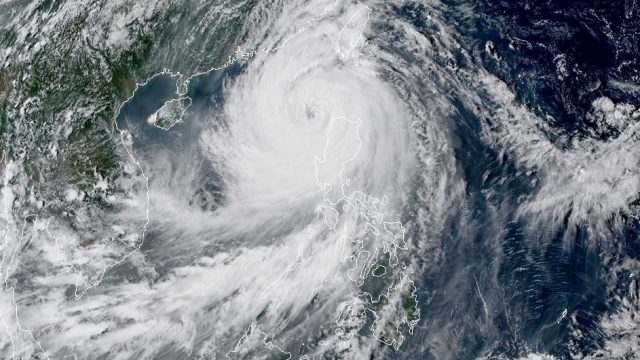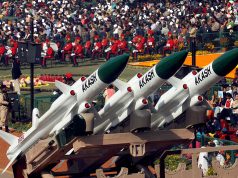(Update 3, 5:26 p.m.) Destructive weather disturbances such as hurricanes, typhoons and cyclones might all sound different but they are essentially the same phenomenon — they are simply originating from different bodies of water and can all be called by the generic term “storms.”
A storm is any violent disturbance in the atmosphere involving low pressure, stronger-than-usual winds and liquid or solid water particles falling from clouds like rain or hail. A storm may also involve thunder and lightning.
It was recently reported that six storms have simultaneously formed in different areas of the world. One was Hurricane Florence, which made its landfall in the United States last night. Three other storms had been sighted in the Atlantic Ocean — Tropical Storms Helene and Isaac and Subtropical Storm Joyce.
The sixth subsequent storm in recent days was in the Pacific Ocean called Mangkhut, which quickly developed into a typhoon and hit Guam. As it made its way to the Philippines on September 12, it was declared a super typhoon by the US Navy’s Joint Typhoon Warning System.
When Typhoon Mangkhut entered the Philippines’ area of responsibility, the country’s national weather center PAGASA named it “Ompong.”
Florence, Helene, Isaac, Joyce and Mangkhut were all tropical cyclones—a variety of storms that is a rotating, organized system of clouds and thunderstorms arising over tropical or subtropical waters, specifically oceans.

Besides cyclones, other varieties of storms are ordinary rain showers, snowstorms, thunderstorms as well as wind-related disturbances such as gales, tornadoes and sandstorms. They are all popularly called “storms” if one doesn’t want to be too specific about them.
Storms in the Atlantic Ocean
A hurricane is also tropical cyclone but one that occurs in the Atlantic Ocean, Caribbean Sea, Gulf of Mexico, eastern North Pacific Ocean and the central North Pacific Ocean. The same type of disturbance in the Northwest Pacific is called a typhoon.
But for a tropical cyclone to be specified as a tropical depression, tropical storm or—in Florence’s case—a hurricane, it must meet a certain wind intensity:
- Tropical depression — weakest tropical cyclone; has maximum sustained winds of 38 mph (33 knots) or less.
- Tropical storm — has maximum sustained winds of 39 to 73 mph (34 to 63 knots).
- Hurricane — has maximum sustained winds of 74 mph (64 knots) or higher, corresponding to a Category 1 or 2 on the Saffir-Simpson Hurricane Wind Scale.
- Major hurricane — with maximum sustained winds of 111 mph (96 knots) or higher, corresponding to a Category 3, 4 or 5 on the Saffir-Simpson Hurricane Wind Scale.
Categories are ratings from 1 to 5 that weathermen use for the intensity of hurricanes which are, again, tropical cyclones arising in this part of the world that have maximum sustained winds of least 74 mph.
A Category 1 hurricane has “very dangerous winds” with an intensity of 74 to 95 mph, while a Category 5 hurricane has maximum winds of at least 157 mph that could cause “catastrophic damage.”
Hurricane Florence, which just made a landfall in North Carolina, was a Category 4 major hurricane since its winds of up to 130 mph fall within the Category 4 range of 130 to 156 mph.
In the Atlantic, hurricane season officially runs from June 1 to November 30, according to the National Ocean Service.
Storms in the South Pacific and Indian Ocean and the Philippines’ case
The general term tropical cyclone is simply used for comparable weather disturbances in the South Pacific and Indian Ocean regardless of their wind strength. It is also the English term for the Filipino “bagyo.”
Similar to hurricanes, tropical cyclones that enter the Philippine area of responsibility from the South Pacific are also classified by their wind intensity, but instead of “miles per hour,” the Philippines’ weather bureau PAGASA uses “kilometers per hour” as measure:
- Tropical depression — the weakest tropical cyclone with maximum sustained winds of at least 61 kph.
- Tropical storm — has maximum sustained winds of 62 to 117 kph.
- Typhoon — has maximum sustained winds of 118 kph to 220 kph.
- Super typhoon — has maximum sustained winds of 220 kph and above.
Any of them is a tropical cyclone, and could also be called a storm.
There is also what PAGASA calls a tropical cyclone warning system, or signals raised in areas expected to experience a certain wind intensity as a cyclone approaches:
- Signal No. 1 — winds of 30 to 60 kph in the next 24 hours
- Signal No. 2 — winds of 61 to 120 kph in the next 24 hours
- Signal No. 3 — winds of 121 to 170 kph in the next 18 hours
- Signal No. 4 — winds of 171 to 220 kph n the next 12 hours
- Signal No. 5 — winds of more than 220 kph in the next 12 hours
These storm warning signals indicate the level of urgency needed in soon-to-be affected areas for actions to reduce loss of life and property, such as preemptive evacuations, removal of billboards and protection of crops and other assets.










